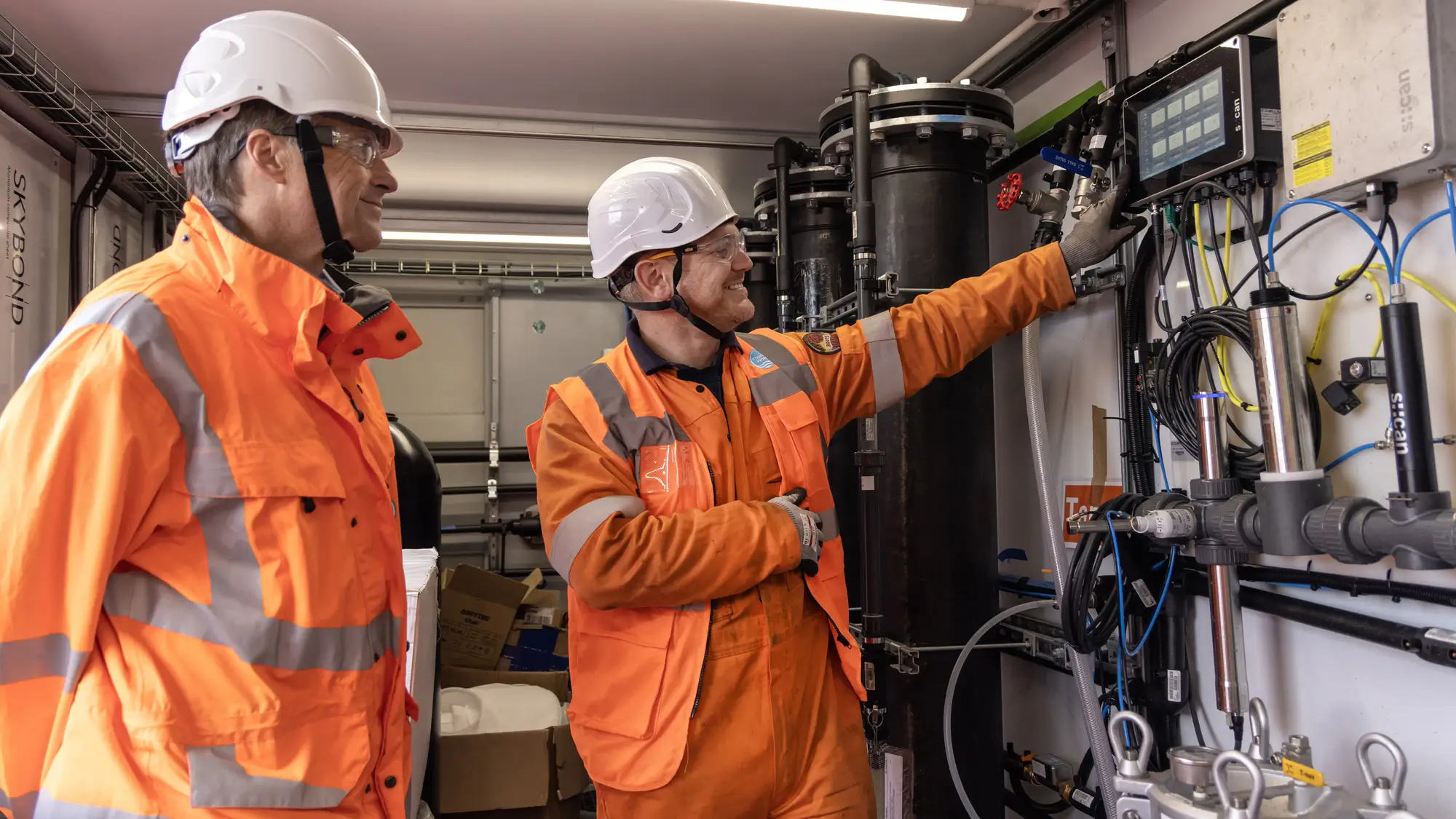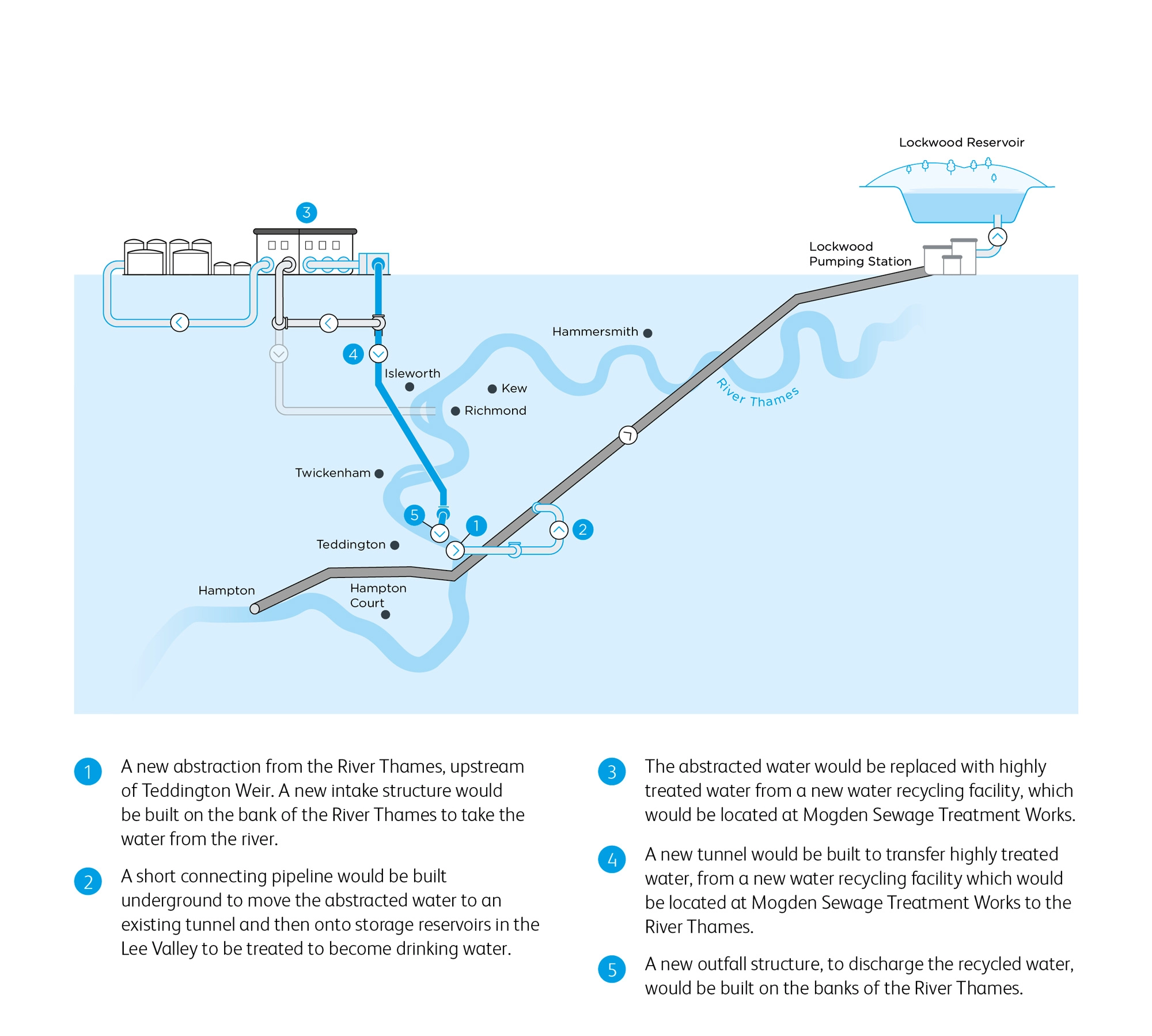Latest news
Thames Water begins new water quality trial to support its London drought resilience proposals
15 October 2024

- A new water quality trial begins today (14 October 2024) to safeguard drinking water supplies to millions of households and businesses across London.
- The UK’s largest water company is testing the tertiary treatment process that will be used as part of its nationally significant Teddington Direct River Abstraction (TDRA) project.
- Tertiary treatment provides an extra cleaning layer to wastewater during the sewage treatment process, ensuring that water can be safely recycled and transferred back into watercourses to help protect the natural environment.
- Thames Water is proposing to use this technology to support its river abstraction and water recycling project in Hounslow, Richmond and Kingston.
- Thames Water forecasts a shortfall of 1 billion litres of water per day by 2050 and expects to supply an additional two million customers in London by that time, up from eight million to ten million.
Thames Water’s Teddington Direct River Abstraction (TDRA) project is designed to protect Greater London’s drinking water supplies during periods of drought. It proposes to take water from the River Thames and transfer it along an existing pipeline to the Lee Valley Reservoirs, so it can be used for drinking water.
To replenish what is taken, and balance water levels and flows, highly treated recycled water would then be transferred via a new tunnel and pipeline from Mogden sewage treatment works, back into the River Thames, upstream from Teddington Weir.

If approved, the project will protect water supply for millions of Londoners. It is designed to deliver up to 75 million litres of water each day and would spare London’s economy from the catastrophic effects of a severe drought, which could cost as much as £500 million a day.
Once operational, the project will also provide immediate protection against the risk of drought ahead of a new reservoir being built for the region.
Simon Adams, Project Director for Thames Water’s Strategic Resource Options said: “We’re committed to maintaining a healthy flow of water in the River Thames during drought, enabling local wildlife and habitats to thrive. This project will use recycled water to maintain river levels during extremely hot and dry summers, mitigating against the effects of climate change and population growth, which are already evident across the South East, while protecting water supply for millions of people.
“It’s vital that we invest in new infrastructure to protect people, the economy, and the environment from the potentially serious effects of drought. Our Water Resources Management Plan , which was recently approved by the Government, paves the way for this vital project. We are committed to ensuring our proposals protect the health of the River Thames. That matters to local communities, and it matters to us too.”
Wastewater treatment process
Replenishing local rivers and streams with clean wastewater is already a very important part of the wastewater treatment process, as it helps to keep water flowing and to protect the environment.
Primary treatment
Primary treatment involves removing organic solid matter - otherwise known as human waste – from wastewater. The waste is separated from the water by putting it into large settlement tanks, where solids sink to the bottom. The settled solids are also referred to as ‘sludge’. Large arms or scrapers help to push the sludge towards the centre, where it’s then pumped away for further treatment. The cleaner water passes over a wall near the top of the tank ready for the next stage of the treatment process.
Secondary treatment
During secondary treatment the smaller and sometimes invisible organisms are removed. Wastewater is put into rectangular tanks called ‘aeration lanes’, which pump air into the water. This encourages the useful bacteria to break down and eat the harmful bacteria. The more the useful bacteria eat, the more they grow and multiply, until all the bugs are gone.
Tertiary treatment trial (additional wastewater treatment)
Tertiary treatment removes tiny, suspended particles from wastewater that has already undergone primary and secondary treatment, such as dissolved organic and inorganic substances, and additional contaminants.
Following the successful installation of temporary plant equipment at Mogden sewage treatment works, the tertiary treatment trial is now underway and is expected to run continuously for at least 12 months.
The trial will be supported by off-site laboratory testing and the results will be reviewed by the Environment Agency to help determine whether a discharge licence should be granted in the future. Importantly, wastewater treated and discharged through the tertiary treatment process would not cause a deterioration in the quality of the water in the River Thames. Recycled water discharged into the Thames, through the abstraction process, would help to enhance the river’s water quality.
Thames Water intends to submit an application for development consent to the Planning Inspectorate in 2026. If the TDRA project is approved for construction, the Environment Agency will closely monitor its ongoing operation under the terms of the license they grant.
Results from the tertiary treatment trial will be published and shared with local communities as part of the statutory consultation process next year.